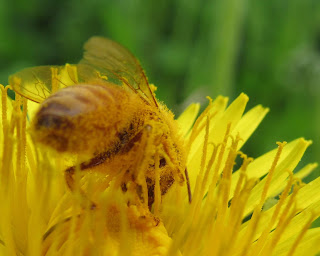Printing Tips
If you'd like to support this site and all the free things I post- please check out my Don't Eat the Paste Mandala collection coloring book for 9.99 at Amazon.
Thursday, May 30, 2019
Eating Weeds: Dandelions
I was just asked on Facebook about eating dandelions.
The answer deserves it's own blog post, not just a reply to a comment.
Dandelions are one of those superfoods in every way. Every part of a dandelion is edible. My family doesn't eat the stems, because they take some preparation and can cause stomach upset. But the rest of it we do. Fortunately, when my children were little they blew lots of dandelions and my lawn is not chemically treated.
First thing: Make sure your dandelions come from places that are not treated with chemicals or close to busier roads with exhaust particulates that will fall on the dandelion. You don't want to eat those things.
Okay, have a safe place to harvest?
In the spring, young green leaf rosettes can be pulled up or cut off at the base. Rinse them, pat them dry, and fry them in a tempura batter for a nice treat.
Later in spring, start looking for buds close to the ground, the buds should be tightly closed and sort of squared off at the top. A tapering bud like formation is after blooming but before going to seed. A new bud tapers down to a rounded end at the stem and has a flat wide top in comparison to the base. (I'll post a picture here later). The buds can fermented like pickles to use as a substitute for capers. I have some fermenting now! You'll use a basic salt brine, plus seasonings you like. Mine have garlic, red pepper, onions and peppercorns in them. A basic salt brine is 2 Tablespoons of salt to 1 qt of water. Clean all your ingredients, chop your onions if you're using them, and put them in the brine. Weight it down using either specially made weights, a smaller jar full of brine or a small zip bag full of brine. Make sure all your vegetables are completely submerged. Put the top on the jar finger tip tight and put it in a warm but not too warm part of your house. Check every day to make sure that it's not building up too much pressure. You'll see bubbles forming, that's normal. If the button on the top of the jar won't press down, relieve the pressure by carefully opening it just a little. After two weeks, check the tartness and if it's where you want it, put it in the fridge to slow (not stop) the fermenting. Eat within a couple months. If you want it more sour, let it ferment longer. Watch for mold, but as long as everything is properly submerged, there shouldn't be any.
Also in spring, young leaves can be used in salads. They are delicious, and considered a bitter.
Dandelion blossoms can also be fried, made into jelly or made into wine. A quick internet search will turn up a lot of recipes for dandelion wine.
My Dandelion Jelly Recipe
My Fried Dandelion Recipe
You can rinse and freeze dandelion blossoms for later use in wines or jellies. Rinse, use a salad spinner to extract excess water or even squeeze it dry, freeze in single layers, then put in a labelled bag in your freezer to make the jelly when you have time.
For fried dandelion blossoms, any basic tempura batter works just fine though.
Older but not huge leaves can be boiled as any other vegetable, then used in soup. Discard the boiling water. Boiling helps get rid of some of the oxalates.
The bigger they get, the more bitter they get, so there is a point where you won't want to eat them.
The seeds can be collected, and threshing them lightly in a paper bag then using a fan to blow away the fluffs makes for a free seed that you can use to grow microgreens in the winter. Just sow as you would any other seed. They can also be sprouted, but I find microgreens a more effective use of time, plus if you miss some fluff, it won't matter with microgreens which you are cropping.
Dandelions are high in vitamins A, C, K and a good source of dietary fiber.
In the late fall, you can dig up the roots, cut them up and let them dry to hard, roast them either in the oven at 350 degrees Fahrenheit or toast them in a cast iron skillet. Store in an airtight jar. A decoction made by simmering the root in water makes a tasty non-caffeine coffee substitute.
More dandelions on this site include:
Dandelion Printable Recipe page
Dandelion and Bee coloring page
Dandelion Lined Paper Printable
Subscribe to:
Post Comments (Atom)


No comments:
Post a Comment
Thank you for leaving a comment! Because of the high spam levels and still wanting the site to be friendly, I switched to moderating comments instead of a captcha. As long as you aren't a spammer or spambot this comment will show soon!